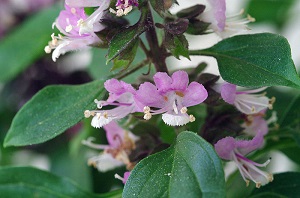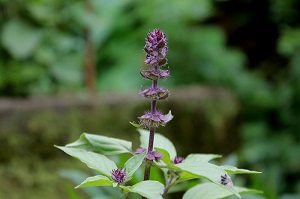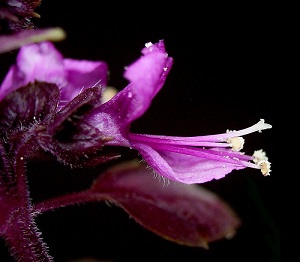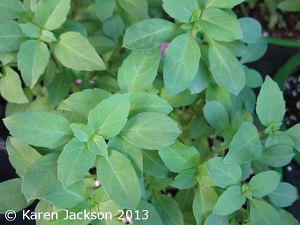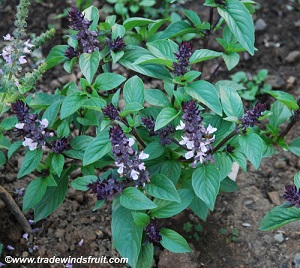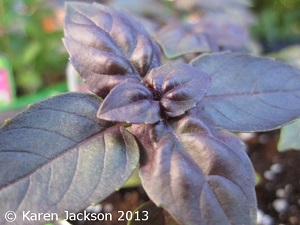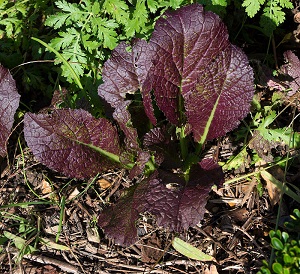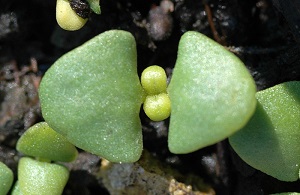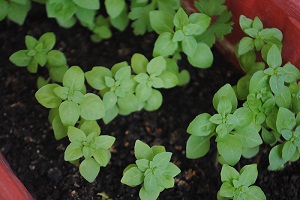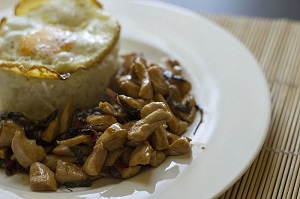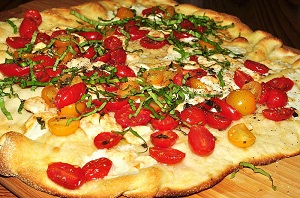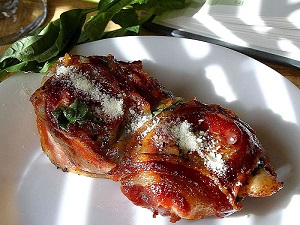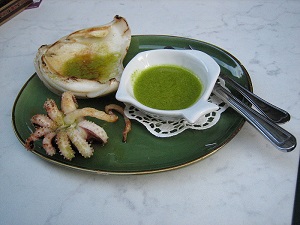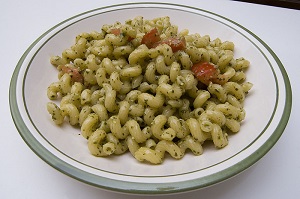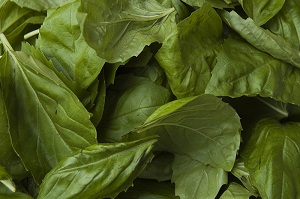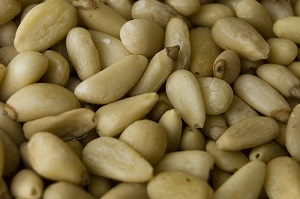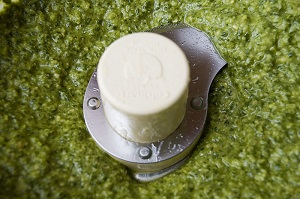| Basil - Ocimum basilicum | |||||||||||||||||||||||||||||||||||||||
|---|---|---|---|---|---|---|---|---|---|---|---|---|---|---|---|---|---|---|---|---|---|---|---|---|---|---|---|---|---|---|---|---|---|---|---|---|---|---|---|
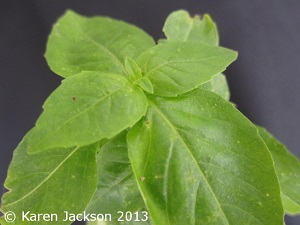 Fig. 1  Sweet basil Ocimum basilicum 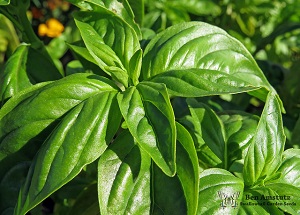 Fig. 2 'Genovese' basil O. basilicum 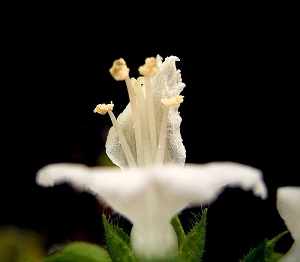 Fig. 3  O. basilicum 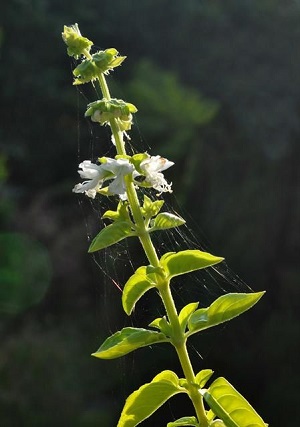 Fig. 4  Sweet basil, common basil (O. basilicum) 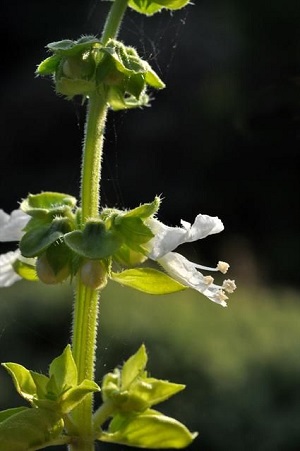 Fig. 5  Fig. 6  O. basilicum 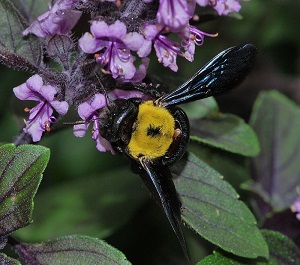 Fig. 10  Female of Xylocopa pubescens foraging on basil. A Symbiotic mite (Dinogamasus sp.) can be seen protruding from the bee's acarinarium. Photographed in Tel Aviv, Israel 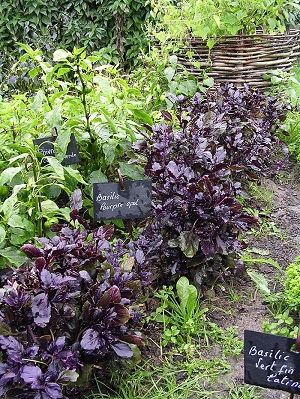 Fig. 11  Basilic pourpre 'Opal' 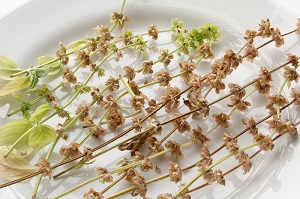 Fig. 20  Basil plant flowers and seeds 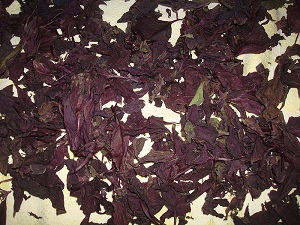 Fig. 21  Drying basil leaves 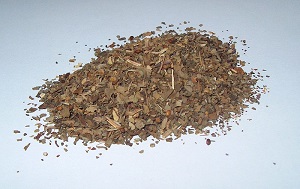 Fig. 22  Dried basil leaves 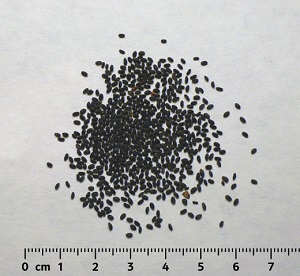 Fig. 23  Dried basil seeds, basil seeds purchased in a Cleveland, Ohio-area Indian grocery store. These seeds are referred to in various languages as sabja, subja, takmaria, tukmaria, falooda, or hột é. 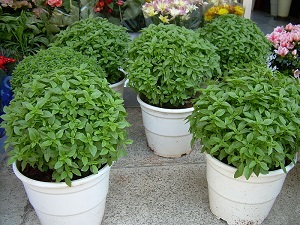 Fig. 24  O. basilicum grows well in containers 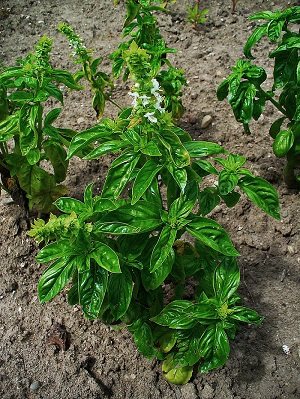 Fig. 25  O. basilicum, Lamiaceae, sweet basil, habitus 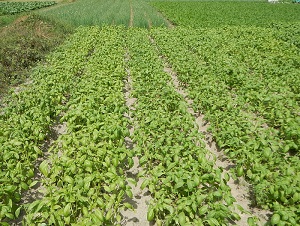 Fig. 26  O. basilicum Pampanga - (Barangay Hall, Immaculate Conception Chapel, Vegetable fields in the Philippines 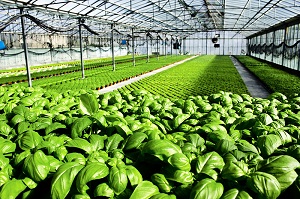 Fig. 27  Basilico in produzione in serra ad Albenga, a Lusignano 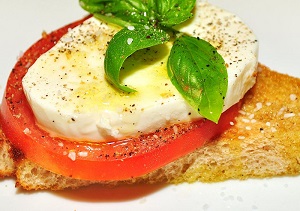 Fig. 28  Classic: garlic toast and olive oil, fresh ground black pepper, kosher salt | Scientific
name Ocimum basilicum Common names English: basil, sweet basil; Arabic: reihan; French: basilic; German: basilienkraut, basilikum; Italian: basilico; Japanese Rōmaji: me-bōki; Portuguese: alfavaca, manjericão; Spanish: albahaca; Swedish: basilika; Transcribed Chinese: luo le 4 Synonyms O. basilicum var. album (L.) Benth.; O. basilicum var. anisatum Benth.; O. basilicum var. basilicum; O. basilicum var. densiflorum Benth.; O. basilicum var. difforme Benth.; O. basilicum var. majus Benth.; O. basilicum var. pilosum (Willd.) Benth. 3 Family Lamiaceae (mint family) Origin Native to India, Africa, and Southeast Asia 2 Uses Leaves and flowers raw as flavoring in cuisines; as an addition to herb/vegetable garden; used in containers; aromatic ground cover Life Form Herb 11 Height 8 in.-10 ft (20 cm-3 m) depending on the cultivar Plant habit Stems erect, square; much branched Longevity Most basils are annuals in Florida, but a few behave as perennials 2 Pruning requirement Pinching of terminal shoots to maintain bushiness Leaves Opposite; light to dark green, or dark burgundy; flat or ruffled; smooth or serrated Flowers White or purple-tinged, around 0.5 in. (1 cm) long, and borne in simple terminal racemes 7 Season A cool season crop in Florida; plant in the early spring or fall USDA Nutrient Content: fresh, dry pdf Light requirement Full sun to part shade, with protection from harsh afternoon sun Photoperiod Short day (<12 hours); neutral day (12-14 hours); long day (<14 hours) 11 Develops best under long day conditions 12 Soil tolerances Prefers light sandy or loam soils 8 Soil texture Heavy, medium Soil depth for planting Medium 20-60 in. (50-150 cm); shallow 8-20 in. (20-50 cm) 1 pH preference 5.5-6.5 8 Cold tolerance Cold damage 50°F (10°C), killed at 32 °F (0 °C) 12 Drought tolerance Cannot tolerate drought stress 8 Water requirements Irrigate in areas of variable rainfall 12 Plant spacing 12 in. (30 cm) apart, depending on the cultivar Seed germination temperature 70-80 °F (21-80 °C) 12 Seed germination 14-21 days 12 Seed storage/germination capacity 4-5 years 12 Invasive potential * None reported Disease/Pest resistance Susceptible to powdery mildew Known hazard None reported Reading Material Food: Just Grow It! Basil, University of Hawai'i at Mānoa pdf Basil, Clemson University, Cooperative Extension pdf Origin All basil species (Ocimum spp.) belong to the Lamiaceae (mint) family. Different basil varieties are used around the globe and each basil's unique flavor compliments the regional dishes it can be found in. 2 This plant has been cultivated in India and the Middle East since ancient times and was known to the Greeks and Romans. 7 Description Usually Basil is described as an annual or half hardy annual. In warmer climates it can be grown as a perennial. Basil is suitable to grow in containers. It likes water and well drained soil and is a strongly aromatic herb with a great diversity of cultivars and flavors. There are more than fifty species of basil (Ocimum spp.). They differ in growth habit, color and aromatic composition. 8 Flowers Flowers are spikes of small white, pink or purple, blooming from mid-summer to fall. The flower and fragrance is considered spicy, sweet with overtones of pepper, mint, and sometimes licorice. 8
Fig. 7. Flowers of basil (O. basilicum) Fig. 8. Babari herb (Nepal) Varieties Basil is available in wide selection of scents and flavors due to the varying types and quantities of essential oils contained in each variety. Basils can also be quite different in size and appearance. 2 The many varieties of basil can be generally divided into four groups – sweet green, dwarf green, purple-leaf, and scented leaf. Basil can even be found in chocolate, licorice, camphor, and anise-scented varieties. You needn't limit yourself to just one variety of basil—plant as many as you like and see which works best in your garden and which flavors you like in your kitchen. 2
Fig. 12. 'Cinnamon' basil Fig. 13. 'Spicy Globe' basil Fig. 14. 'Christmas' basil Fig. 15. Purple basil O. basilicum var. purpurescens Fig. 16. O. basilicum var. purpurascens 'Red Rubin' Basil Cultivars Harvesting Pick younger leaves as they contain more oil in the morning when the essential oils are at their strongest and before the heat of the afternoon sun. Tender leaves may be used fresh or dried along with the flowers. Allowing the plant to flower and set seed will shorten its growing season. If you are more interested in basil for culinary uses rather than ornamental, pinch off flowers as they form to focus the plant's energy on making leaves. However, allowing your basil plant to flower can be useful if you are interested in collecting seed from it. If you do allow basil to flower, it's important to keep a distance of 150 feet between different varieties to prevent cross-pollination. 2 To save seeds from basil, let the flowers "go to seed"—that is, leave them on the plant until they die, allowing the seeds turn brown and nearly dry. The seeds are then easily harvested. By hand, separate them from the seed capsules they form in. Stored in a cool place in a well-sealed container, your basil seeds may be used for several years to come. 2 Propagation by seed Keep moist and in a dark or light area until germination, many cultivars taking 8 to 14 days; approximately 70 days to harvest Sowing depth: ¼ in. (6 mm) Plant spacing: 1 in. (30 cm) Transplant when seedlings are about 6 in. (15 cm) The germination medium should be damp before it is placed in the container. Fill the container to within about 1/2 inch of the rim. Seed should be scattered uniformly across the surface at the rate of 10-20 seeds per square inch, or sown in rows. You may choose to give each seed more space, depending upon seed size and length of time small transplants will be left in the container. Seeds sown too thickly will result in excessive competition among plants and spindly growth. Cover with a thin layer of germination medium. Finely pulverized sphagnum moss has fungicidal properties and would be ideal for covering seed if it is available. Basil seeds will germinate in either dark or light conditions. The ideal temperature for germination will vary depending upon the plant cultivar. However, most seeds will germinate very well within a range of 70-80 degrees F. Basil requires a media temperature of 70 degrees F for germination. Once the seed germinates, the basil transplants require a daytime growing temperature of 75 degrees F, and a nighttime temperature of 65 degrees F. 1
Fig. 17. O. basilicum sprouting Fig. 18. çeşitli fesleğen görüntüleri, new seedlings Fig. 19. O. basilicum (Sweet basil), seedlings, Ulupalakua Ranch, Maui, Hawai'i Propagation from cuttings ‘African Blue’ and non-seeding varieties like the cultivar ‘Lesbos’ (syn. ‘Greek Columnar,’ ‘Aussie Sweetie’) can only be grown from cuttings. ... growing basil from cuttings is relatively easy and is important if you want to prevent crossing. This is particularly helpful for preserving the integrity of unusual varieties. ... cut a 4-inch (10 cm) portion of the stem before it flowers, remove the leaves from the lower section of the stem and place the stem in a small cup of water. Place on a windowsill and change the water daily until roots form. After roots have emerged, basil can be moved to a small pot. 14 Planting Growing basil in raised beds or containers is a good way to provide adequate drainage and avoid having to bend over to harvest leaves. 2 When planting in the spring, wait until the last frost has passed and night time temperatures are above 55°F. When planting basil from seed be sure to thin out seedlings so that they are spaced about 10 inches apart. Using mulch can help conserve soil moisture, regulate soil temperature, and suppress weed growth around your plants. 2 Pruning Promote a bushy habit by pinching growth points; cut off flowers when they appear preventing seed formation and encouraging good leaf production. Pinch basil just above a leaf or pair of leaves, removing no more than a quarter of the plant. 8 Fertilizing Apply two to two and half pounds of a complete fertilizer such as 6-6-6 or 8-8-8 per 100 sq. ft. of bed. Do not over fertilize as this will produce rank growth which will result in less flavorful basil. 8 Plants overfertilized with nitrogen often show dark discolorations in the cooling rooms after harvest. 6 Irrigation Needs a good water regime. Annual rainfall requirements are 600-4300 mm (23.6-169.3 in.), with an optimum between 1000-1600 mm (39.8-63 in.). Irrigation needed in regions of variable rainfall. 12 Diseases Page Pests Basil is subject to a variety of pests which include Japanese beetles, grasshoppers, slugs, aphids, spider mites, whiteflies, cutworms and nematodes, Food Uses Used in Thai, Vietnamese and Italian cuisines. Basil is used fresh, dried or frozen in tomato dishes, for pesto, eggs, soups, salads, salad dressings, meats, and potatoes. Its stems and leaves can be used in flavored vinegar and oils. 8 In Indonesia, lemon basil is often used fresh served with vegetables, poultry, or fish. Lime basil is great for marinades and sauces as well as deserts like sorbet or shortbread cookies. 2 Basil's attractive flowers can also be used for cooking and can be found in purple, pink, or white depending on the variety. 2 The seed can be eaten on its own or added to bread dough as a flavouring. When soaked in water it becomes mucilaginous and can be made into a refreshing beverage called 'sherbet tokhum' in the Mediterranean. 9
Fig. 29. Thai basil chicken Fig. 30. Cheese pizza with tomato and basil Fig. 31. Pancetta and basil wrapped chicken Fig. 32. Squid tapas with basil and garlic sauce Fig. 33. A plate of cellentani (also referred to as cavatappi) pasta with pesto and tomatoes. Pesto alla genovese is made from: Fig. 34. basil leaves Fig. 35. and pine nuts, Fig. 36. which are ground up with the other ingredients Cooking with Fresh Herbs, University of Florida pdf Florida Food Fare. Basil, University of Florida pdf Drying basil Simple air drying will preserve basil for later use. Rinse the leaves in cool water and gently shake off extra moisture. When thoroughly dry, tie a handful of stems firmly into a bundle. Place the bundle in a paper bag, gathering the top of the bag around the stems and tying again. Hang the bag in a dry place where the temperature doesn't get above 80 degrees. After a few weeks, the herbs should be dry and crumbly. Once basil is dried, store it in an airtight container in a cool, dark cupboard. Keep the leaves whole to preserve the oils, and crush or grind only when using them. 8 ... you can dry basil leaves on screens placed outside in the shade on a hot day. Cover them with cheesecloth to keep the leaves from blowing away. Still another method of drying is on a low setting in the microwave. Lay basil on a paper towel and cover it with a paper towel. It could take up to 3 minutes to dry basil in the microwave. Stop periodically throughout the drying process to turn the basil to help promote quicker drying and to avoid burning. It is very difficult to dry herbs without burning them because of hot spots in the microwave. If you smell the herb as it's drying, chances are you have lost many of the fragrant oils. After drying the basil, store in a sealed, preferably dark container away from the heat. 15 Other preservation methods ... you can also preserve basil by freezing it in ice cubes (nearest to fresh taste when added to cooked foods), putting fresh leaves in vinegar or oil (most useful in salad dressing), and blending it with oil, cheese, and pine nuts, (walnuts or sunflower seeds) to make pesto. Pesto freezes well for six months. Be sure to "seal" your pesto with a layer of olive oil. Dark opal basil makes a beautiful, tangy purple vinegar. Putting herbs in vinegar captures their flavor for the months when fresh herbs are not available. 15 Medicinal Properties ** Sweet basil has been used for thousands of years as a culinary and medicinal herb. It acts principally on the digestive and nervous systems, easing flatulence, stomach cramps, colic and indigestion. 10 Other uses In addition to its very familiar uses such as in tomato-based sauces and salads, it is an ingredient in the liqueur chartreuse. 7 The perfume, pharmacy, and food industries (Simon et al. 1990) use aromatic essential oils, extracted from the leaves and flowers of basil. Several aroma compounds can be found in chemotypes of basil such as citral, eugenol, linalool, methylchavicol, and methylcinnamate and are traded in the international essential oil market. 5 General Ocimum, derives from the ancient Greek word, okimon, meaning smell, referring to the striking nature of basil’s fragrance, and basilicum, is Latin for basilikon, meaning kingly/royal in Greek. In India, basil is considered a sacred herb and is offered in reverence to the Hindu gods, Vishnu and Krishna. At one time, it was used to protect the dead from evil and is still found growing around Hindu temples. Basil is often considered a symbol of love. In Haiti, basil plants are used as an offering to Erzulie, the voodoo goddess of love. In Italy, a pot of basil placed on a balcony signaled that a woman was ready to receive suitors. A word of caution to those who dabble with the language of flowers to send messages. Basil may also be used as an emblem of hatred for an enemy. 8 Further Reading Fresh Basil Production Guidelines For Hawaii, University of Hawai'i at Mānoa pdf Aroma Content of Fresh Basil (Ocimum basilicum L.) Leaves Is Affected by Light Reflected from Colored Mulches, Journal of Agricultural and Food Chemisty pdf Older material Basil or albahaca, 1979, Edible Leaves Of The Tropics Basil, Bush, Sweet, 1931, A Modern Herbal Ocimum basilicum, 1919, Sturtevant’s Edible Plants Of The World Garden Bazil, or Sweet Bazil, 1814, Culpeper's Complete Herbal List of Growers and Vendors | ||||||||||||||||||||||||||||||||||||||
| Bibliography 1 "What conditions are necessary for starting basil from seed?" eXtension.org. eXtension Foundation. 5 Sept. 2008. Web. 21 Jan. 2014. 2 "Basil." Gardening Solutions, University of Florida, gardeningsolutions.ifas.ufl.edu/plants/edibles/vegetables/basil.html. Accessed 7 Dec. 2017, 6 Oct. 2018. 3 "Ocimum basilicum synonyms." The Plant List (2013). Version 1.1. Published on the Internet: www.theplantlist.org/tpl1.1/search?q=Ocimum+basilicum. Accessed 8 Dec. 2017. 4 "Ocimum basilicum L. common names." npgsweb.ars-grin.gov/gringlobal/taxonomydetail.aspx?id=25478. Accessed 8 Dec. 2017. 5 Simon, James E., Mario R. Morales, Winthrop B. Phippen, Roberto Fontes Vieira, and Zhigang Hao. "Basil: A Source of Aroma Compounds and a popular Culinary and Ornamental Herb." Reprinted from: Perspectives on new crops and new uses. 1999, J. Janick (ed.), ASHS Press, Alexandria, VA., hort.purdue.edu/newcrop/proceedings1999/v4-499.html. Accessed 14 Oct. 2017. 6 Hamasaki, Randall T., Hector R. Valenzuela, Dick M.Tsuda, and Janice Y. Uchida. "Fresh Basil Production Guidelines for Hawai'i." Crop Production Guidelines. University of Hawai'i, Cooperative Extension Service. www.extento.hawaii.edu/kbase/reports/speciality.htm. Accessed 11 Dec. 2017. 7Chapiro, Leo. "Ocimum basilicum, basil." Brief summary. Encyclopedia of Life. (CC BY 3.0), eol.org/pages/579364/details. Accessed 12 Dec. 2017. 8 McAvoy, Gene. "Basil - King Of the Herbs." University of Florida, Hendry County Extension Service, Hendry County Horticultural News. hendry.ifas.ufl.edu/HCHortNews_Basil.htm. Accessed 13 Dec 2017. 9 Facciola, Stephen. Cornucopia II, A Source Book of Edible Plants. Kampong Publications, 1998. 10 Chevallier. A. The Encyclopedia of Medicinal Plants. Dorling Kindersley, London, 1996. 11 "Ocimum basilicum." Data sheet, Eurocrop, Food and Agriculture Organization of the United Nations. ecocrop.fao.org/ecocrop/srv/en/cropView?id=1547. Accessed 1 Jan 2018. 12 Schmitz, Peter. "Ocimum basilicum." EcoPort, 2004-03-04, ecoport.org/perl/ecoport15.pl?searchType=entityDisplay&entityId=1547 . Accessed 1 Jan. 2018. 13 Loughrin, John H., "Aroma Content of Fresh Basil (Ocimum basilicum L.) Leaves Is Affected by Light Reflected from Colored Mulches." 2003, Journal of Agricultural and Food Chemistry, American Chemical Society, naldc.nal.usda.gov/catalog/19180. Accessed 22 Jan. 2018. 14 Meyers, Michele. "Basil: An Herb Society of America Guide." The Herb Society of America, 2003. www.herbsociety.org/file_download/inline/c2cd2efa-f150-4aac-9c7b-f10a0ccaf889. Accessed 8 Dec. 2017. 15 Youger-Comaty, Jeanne. "Growing, Selecting And Using Basil." 2001, Ohio State University Extension Fact Sheet HYG-1644-94, oardc.osu.edu. Accessed 9 Apr. 2014. Photographs Fig. 1,12,13,14,15 Jackson, Karen. "Basil Series." 2013. www.growables.org. JPG File. Fig. 2 Swallowtail Garden Seeds. Genovese Basil. Ocimum basilicum. November 7, 2014. (CC BY 2.0), www.flickr.com/photos/swallowtailgardenseeds/15549915298/in/photolist-pG6o4U-7U4g16-5fa5tD-Y3HfM6-nFFSTh-E74JYa-fiqyax- a7WDoq-evU1x-agmxZu-qV63yP-8q5aG4-7bRBVJ-boocFp-najNxr-f4fkGH-74DpJt-XRm1h1-DmBtBv-9jscmU-ibTJsS-aCJBMd-aCk8GD-DhUEEx- 9PGZmN-p3rGNT-HNTga4-9yZw6C-5birZo-qdiiCy-2TQy32-cEDo23-DhUDyz-i9HP3g-8MPMLo-74J1gq-7U4goX-auwmox-9YQZjG-TE8uVZ- WeWwMQ-d7ivSm-WexjFt-e5az4Z-dsqizS-9ZF6Ys-cEDmzJ-3Dw4LR-Ta6ABs-8JVJhg. Accessed 15 Dec. 2017. Fig. 3 Vincentz, Frank. Ocimum basilicum. 30 June 2007. GNU Free Documentation License, Version 1.2, commons.wikimedia.org/wiki/File:Ocimum_basilicum_07_ies.jpg. Accessed 16 Dec. 2017. Fig. 4 Schou, JC. Sweet Basil, Common Basil (Ocimum basilicum). 2012-05-24, 2012-03-05. (CC BY-NC 3.0), eol.org/data_objects/19175128. Accessed 12 Dec. 2017. Fig. 5 Schou, JC. Sweet Basil, Common Basil (Ocimum basilicum). 2012-05-24, 2012-03-05. (CC BY-NC 3.0), eol.org/data_objects/19175129. Accessed 12 Dec. 2017. Fig. 6 Riganese, Luigi. Ocimum basilicum. 2011-10-16. (CC BY-NC 3.0), eol.org/data_objects/13265912. Accessed 12 Dec. 2017. Fig. 7 Cebeci, Zeynel. Flowers of Basil (Ocimum basilicum). 22 May 2009. (CC BY-SA 4.0). commons.wikimedia.org/wiki/File:Flowers_of_Basil.jpg. Accessed 12 Dec. 2017. Fig. 8 skrissh2013. Babari Herb. 2 August 2012. (CC BY-SA 3.0), commons.wikimedia.org/wiki/File:Babari_Herb.JPG. Accessed 12 Dec. 2017. Fig. 9 Vincentz, Frank. Ocimum basilicum. 30 June 2007. GNU Free Documentation License, Version 1.2, commons.wikimedia.org/wiki/Ocimum_basilicum#/media/File:Ocimum_basilicum_02_ies.jpg. Accessed 12 Dec. 2017. Fig. 10 Pisanty (Gidip), Gideon. Female of Xylocopa pubescens foraging on basil. A Symbiotic mite (Dinogamasus sp.) can be seen protruding from the bee's acarinarium. Photographed in Tel Aviv, Israel, March 8, 2010. (CC BY 3.0), www.wikipedia.org/wiki/Basil#/media/File:Xylocopa_pubescens_female_with_mite_1.JPG. Accessed 15 Dec. 2017. Fig. 11 Vorzinek. Basilic pourpre opal. 3 February 2009. (CC BY-SA 3.0), commons.wikimedia.org/wiki/File:Basilic_pourpre_opal.JPG. Accessed 12 Dec. 2017. Fig. 16 Dinkum. Ocimum basilicum var. purpurascens 'Red Rubin'. 19 October 2014. (CC BY-SA 4.0). commons.wikimedia.org/wiki/File:Ocimum_basilicum_Red_Rubin.jpg. Accessed 12 Dec. 2017. Fig. 17 User: Amada44. Ocimum basilicum sprouting. 10 May 2010. Public domain. commons.wikimedia.org/wiki/File:Ocimum_basilicum_sprouting_002.JPG. Accessed 16 Dec. 2017. Fig. 18 Vikiçizer. çeşitli fesleğen görüntüleri. 3 August 2014. commons.wikimedia.org/thumb/a/a8/Fesleğen_1.JPG/1024px-Fesleğen_1.JPG. Accessed 12 Dec. 2017. Fig. 19 Starr, Forest and Kim. Ocimum basilicum (Sweet basil), Seedlings Ulupalakua Ranch, Maui, Hawai'i. June 08, 2012. (CC BY 4.0), starrenvironmental.com/images/image/?q=24518452143. Accessed 14 Dec. 2017. Fig. 20 Alves, Dominic. Basil Plant Flowers and Seeds. 2017. (CC BY 2.0), www.flickr.com/photos/dominicspics/33985546046/in/photolist-f7AtCk-f7QGKY-ejekhp-ejejrT-TDn1rF-TAWa1Y-Syjr8w-TfLkNs- TMbNNs-SB1spX-TQN4mg-ejkBrj-ejejgF-ejejzt-ejekar-ejk3VU-ejkCWy-ejkDG1-TRED6F-TREpHP-SxwTch-TA97aj-SAeAzp-TeYUQG-SAexy4- SAer9R-SxwjNj-SAevee-SAesJK-TA8TmJ-TeYHto. Accessed 15 Dec. 2017. Fig. 21 Narek75. Drying Basil. 21 January 2007. (CC BY-SA 4.0). commons.wikimedia.org/wiki/File:Drying_Basil.JPG. Accessed 12 Dec. 2017. Fig. 22 Henna. Dried basil leaves. 2005. (CC BY-SA 1.0), www.wikipedia.org/wiki/Basil#/media/File:Basilic-spice.jpg. Accessed 15 Dec. 2017. Fig. 23 Badagnani. Dried basil seeds, Basil seeds purchased in a Cleveland, Ohio-area Indian grocery store. These seeds are referred to in various languages as sabja, subja, takmaria, tukmaria, falooda, or hột é. GNU Free Documentation License, Version 1.2, commons.wikimedia.org/wiki/File:Basilseeds.jpg. Accessed 12 Dec. 2017. Fig. 24 FocalPoint. Basil, Ocimum basilicum. 2 June 2007. GNU Free Documentation License, Version 1.2, commons.wikimedia.org/wiki/File:Basilikos.JPG. Accessed 12 Dec. 2017. Fig. 25 Zell, H. Ocimum basilicum, Lamiaceae, Sweet Basil, habitus. 21 June 2009. GNU Free Documentation License, Version 1.2, commons.wikimedia.org/wiki/File:Ocimum_basilicum_001.JPG. Accessed 12 Dec. 2017. Fig. 26 Judgefloro. Ocimum basilicum Pampanga - Barangay Hall, Immaculate Conception Chapel, Vegetable fields in the Philippines. 2 February 2015. (CC BY-SA 4.0). commons.wikimedia.org/wiki/File:JfCamachilesMabalacatBasil408fvf.JPG. Accessed 12 Dec. 2017. Fig. 27 Radiuk. Basilico in produzione in serra ad Albenga, a Lusignano. 10 April 2013. (CC BY-SA 3.0), commons.wikimedia.org/wiki/File: Basilico_in_serra.jpg. Accessed 12 Dec. 2017. Fig. 28 jeffreyw. Garlic toast and olive oil, fresh ground black pepper, kosher salt. 20 July 2010. (CC BY 2.0), www.commons.wikimedia.org/wiki/File:Mmm...fresh_mozz_on_a_tomato_basil_sammich_(4812541121).jpg. Accessed 12 Dec. 2017. Fig. 29 Nebuloni, Luca. Thai basil chicken. 2015. (CC BY 2.0), www.flickr.com/photos/nebulux/20976874546/. Accessed 15 Dec. 2017. Fig. 30 jeffreyw. Cheese pizza with tomato and basil. 27 May 2012. (CC BY 2.0), commons.wikimedia.org/wiki/File:Cheese_pizza_with_tomato_and_basil.jpg. Accessed 16 Dec. 2017. Fig. 31 Sullivan, Jon. Pancetta and basil wrapped chicken. Transferred by Fæ on 2013-02-28. Public Domain. www.commons.wikimedia.org/wiki/File:Pancetta_and_basil_wrapped_chicken.jpg. Accessed 12 Dec. 2017. Fig. 32 Schertzer, Fanny. Squid tapas with basil and garlic sauce. 27 March 2007. GNU Free Documentation License, Version 1.2, commons.wikimedia.org/wiki/File:Squid_tapas.jpg. Accessed 12 Dec. 2017. Fig. 33 Goyette, Paul. and can be used in cellentani with pesto. July 29, 2006. (CC BY-NC-SA 2.0), www.flickr.com/photos/pgoyette/201494978/. Accessed 12 Dec. 2017. Fig. 34 Goyette, Paul. Basil. July 29, 2006. (CC BY-NC-SA 2.0), www.flickr.com/photos/pgoyette/201492293/in/photostream/. Accessed 12 Dec. 2017. Fig. 35 Goyette, Paul. Pine nuts. July 29, 2006. (CC BY-NC-SA 2.0), www.flickr.com/photos/pgoyette/201494211. Accessed 12 Dec. 2017. Fig. 36 Goyette, Paul. Pesto being processed. July 29, 2006. (CC BY-NC-SA 2.0), www.flickr.com/photos/pgoyette/201494211/. Accessed 12 Dec. 2017. * UF/IFAS Assessment of Non-native Plants in Florida's Natural Areas ** The information provided above is not intended to be used as a guide for treatment of medical conditions using plants. Published Sept. 2013 KJ. Last update 5 Aug. 2020 KJ |
|||||||||||||||||||||||||||||||||||||||
